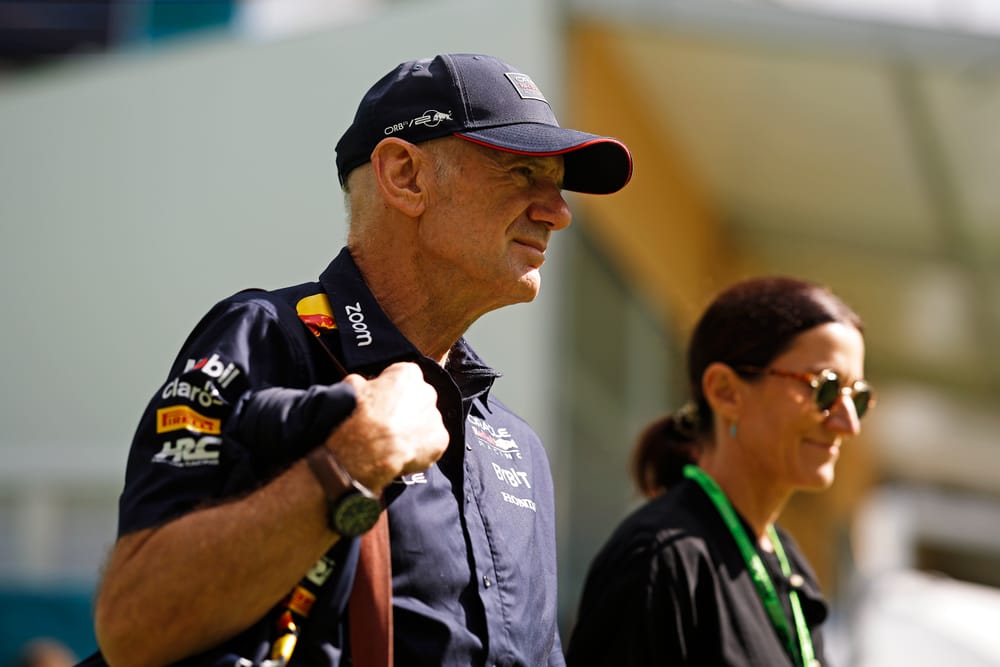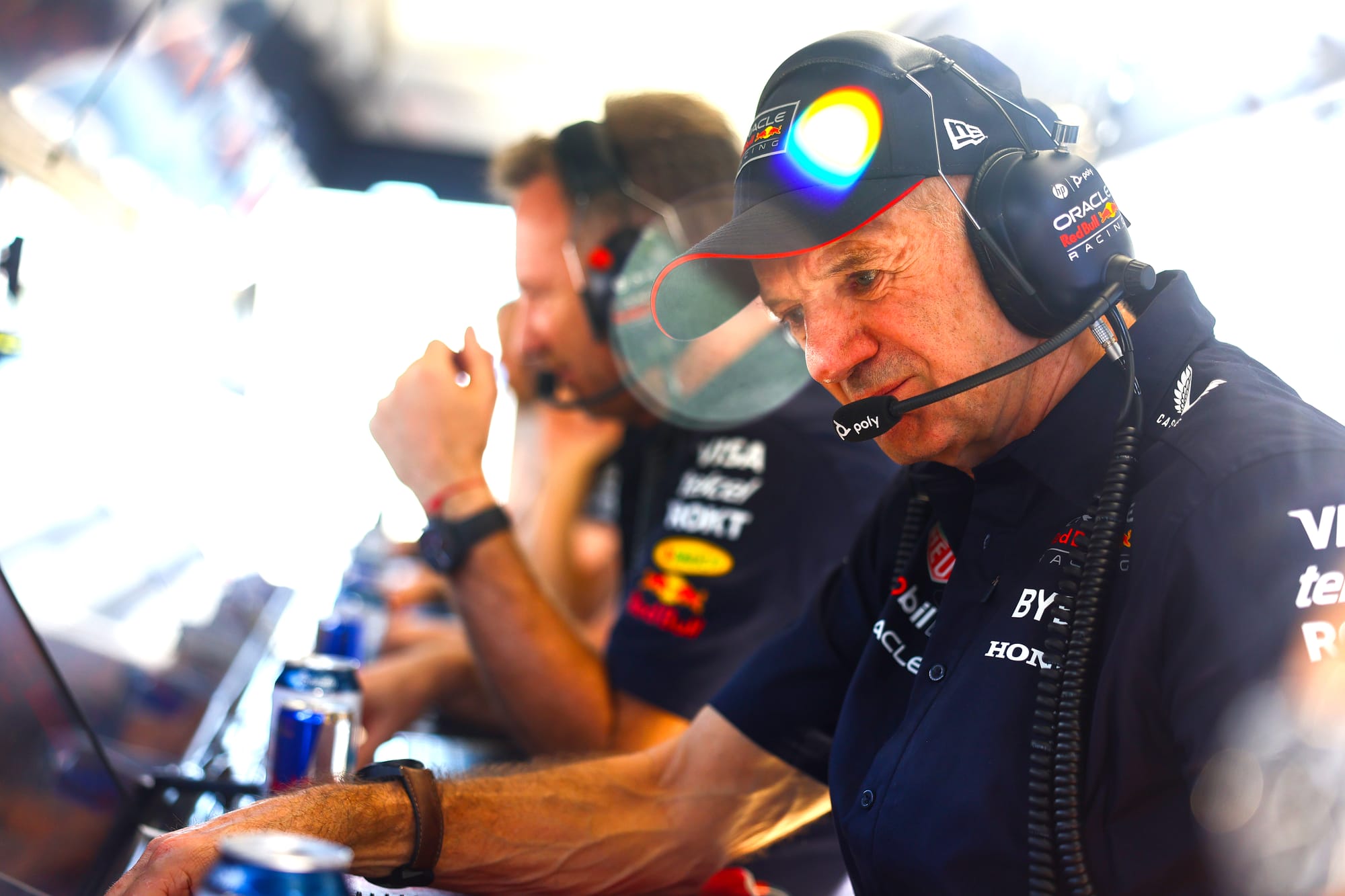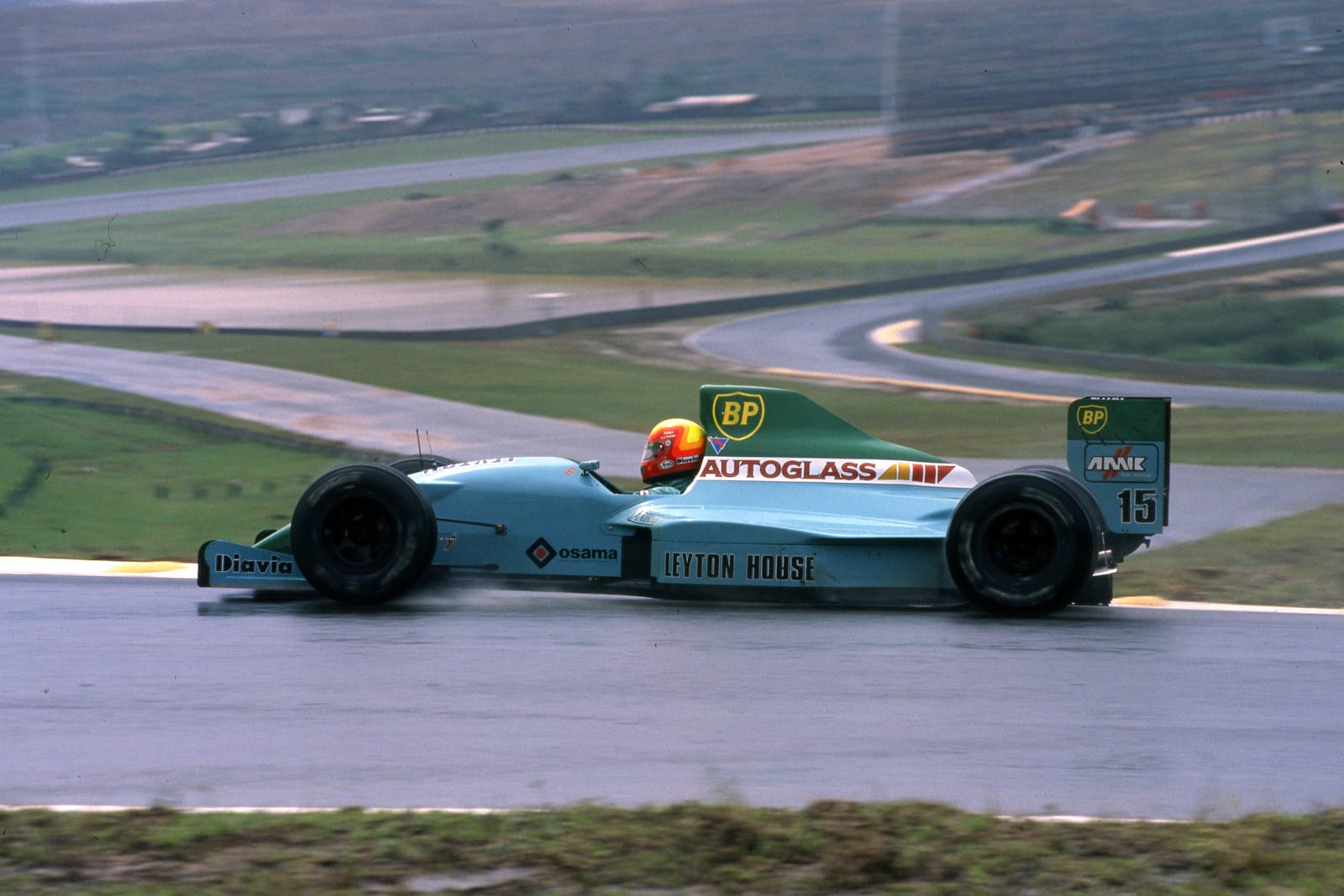Up Next

Adrian Newey is expected to arrive at his sixth Formula 1 team (Aston Martin) 45 years after his first (Fittipaldi) with a reputation as the sport's greatest technical mind of all time.
His track record is quite remarkable, especially so in a sport which is otherwise so opaque in the link between individuals and car performance and which has become more so as the decades have passed.
But Newey, he always finds a way. He's way more than just an aerodynamicist.
He's an engineer with a fantastic, big-picture understanding of everything that determines car performance. He has an apparently intuitive understanding of the relative importance of each link in the chain which holds together the performance parameters for a cohesive whole. He knows that it's a dynamic science, that the importance of each link will change according to other developments and how each can be manipulated to link up better for a greater whole - with laptime as the only barometer.
More than any other engineer, he has mastery over the levers, knows which ones to push and pull and by how much.
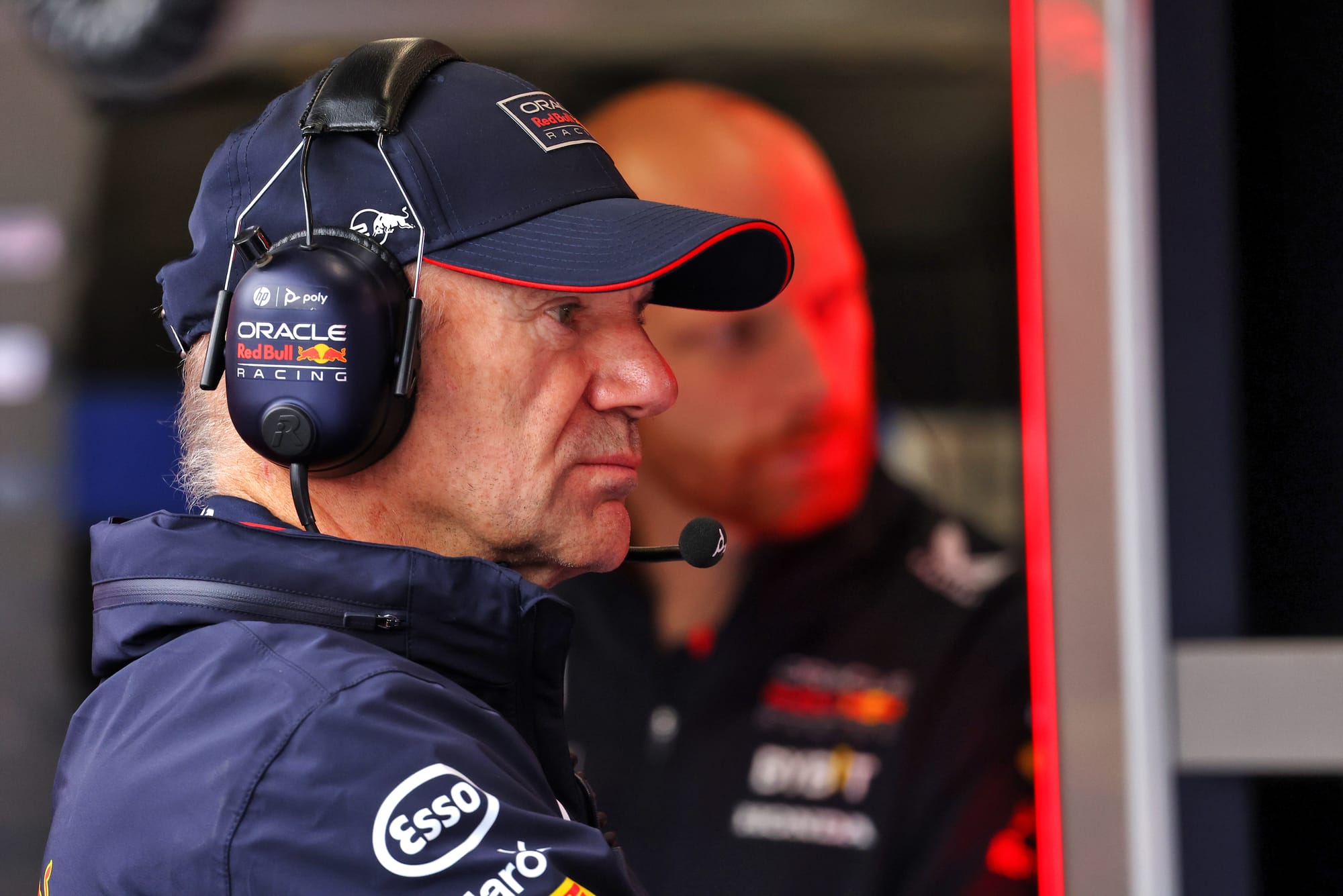
One senior Red Bull engineer once commented: "He will say, 'Oh we need to do this' when everyone else is thinking, 'this is not relevant to the problem'. But then he'll explain, 'Ah yes, but if we do this then we can give ourself more scope with this other thing which if we can move that along gets us out of the corner we're boxed in further along the line'.
"The cascade of all that will be our problem will be fixed, and once he's explained it, it's like the clouds have parted and you're left thinking, 'How could I have been so thick?'"
The different times, different cultures and different circumstances have meant his skills have manifested in different ways. But the end result is invariably the team he joins becoming the pacesetter. It doesn't always happen immediately, but it does always happen.
Williams
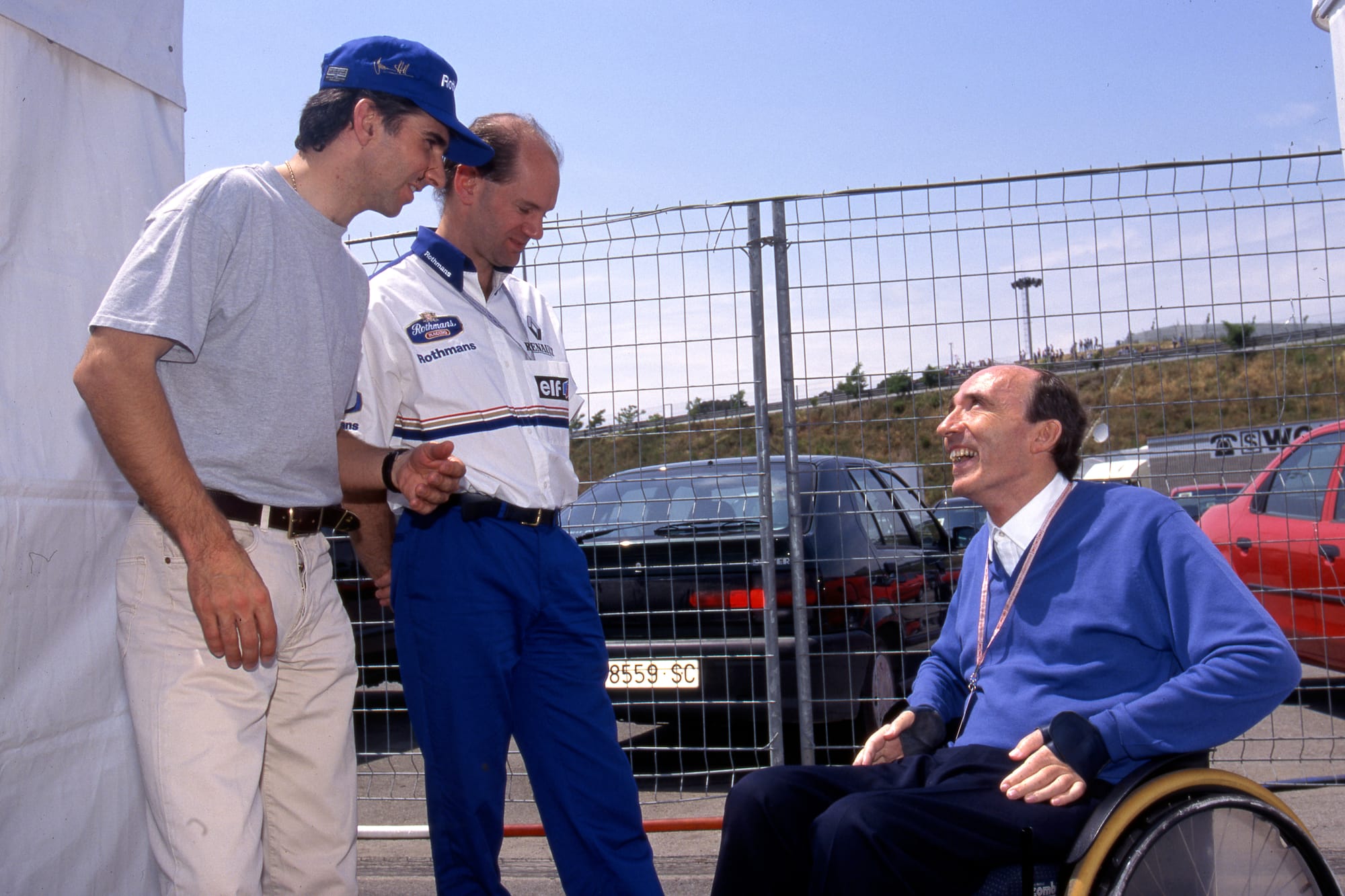
Newey was recruited to Williams by Patrick Head mid-season in 1990. Newey's Leyton House designs of 1988-90 were the most aerodynamically advanced on the grid but the team was underfunded, the cars underpowered.
Williams's designs were dated and conservative by comparison, but the team was properly funded and by the time Newey joined had a great engine partner in Renault.
Newey's sophisticated understanding of aerodynamics - fine-honed in IndyCar, race engineering for Mario Andretti and Bobby Rahal - brought the team bang up to date.
The 1991 Williams FW14 was a visibly more aerodynamically advanced car than its predecessor and formed the basis of the all-conquering active ride FW14B of 1992. Newey was instrumental in pushing for the active ride, now that the electronics technology could more fully exploit it than had been the case when it had been used a few years earlier.
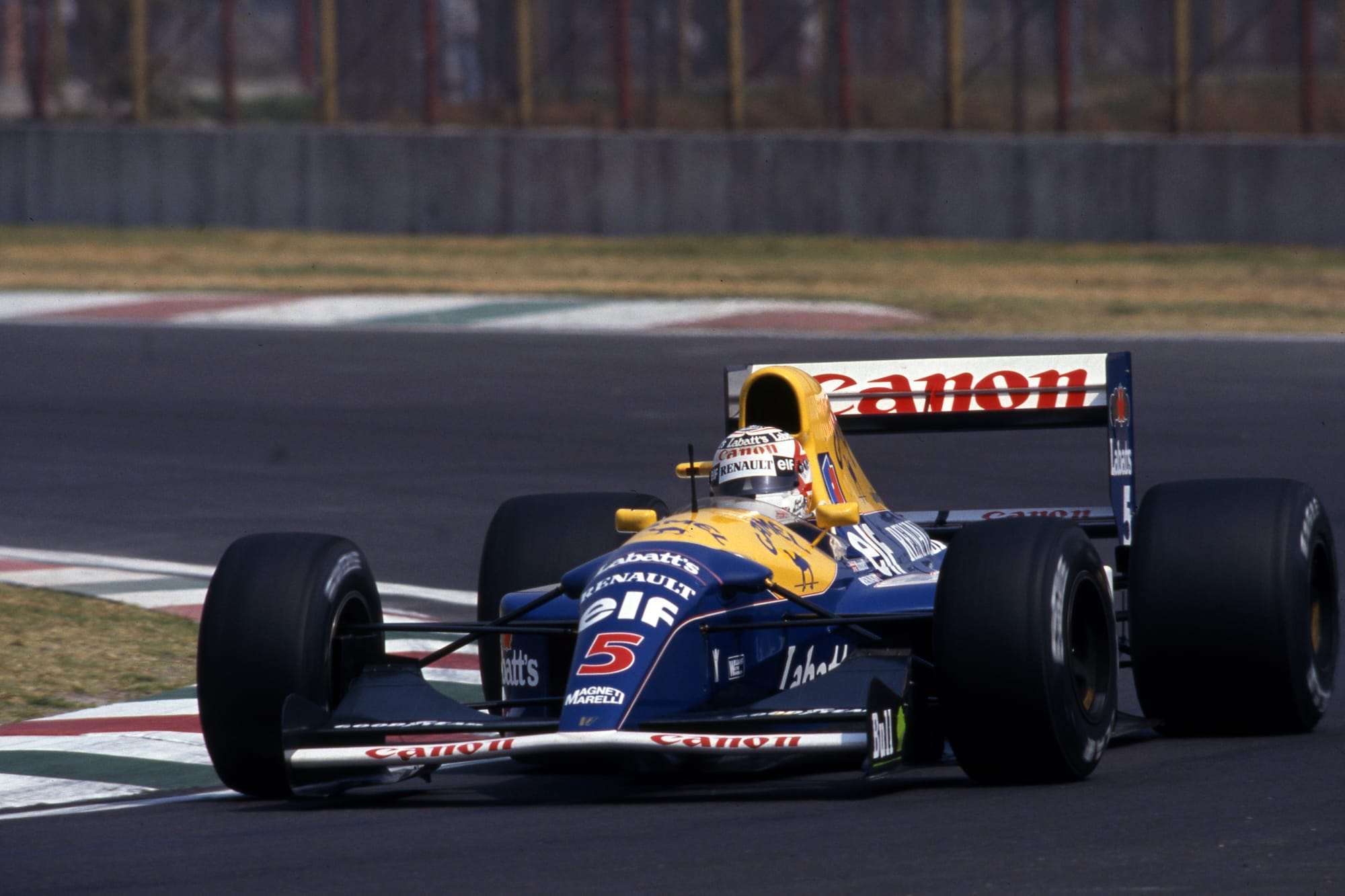
Where others had written off active as not bringing any big benefit, it was Newey who investigated if the control systems could now be created to confer active with a perfect control of the aerodynamic platform.
He'd go on to create a sequence of title-winning cars for Williams, finding left-field ways around various restrictions. For example, his running an undercut diffuser above the exhausts rather than below them created a hugely enhanced diffuser volume which was at the heart of the 1996 FW18's superiority.
But although Williams was then at the cutting edge of car technology, its management under Frank Williams and Head was from a previous era and they clearly underestimated the value Newey represented.
A couple of driver decisions made without him - against the agreement he'd made with them - and a refusal to countenance Newey taking a stake in the team triggered his departure.
Newey is a deeply competitive soul, but also quite a sensitive one. While Frank and Patrick just got on with running their team together the way they always had, not taking Newey as seriously as he deserved marked a certain lack of respect. Which made him all the more attentive to the very heavy overtures being made to him on McLaren's behalf by Martin Whitmarsh.
McLaren
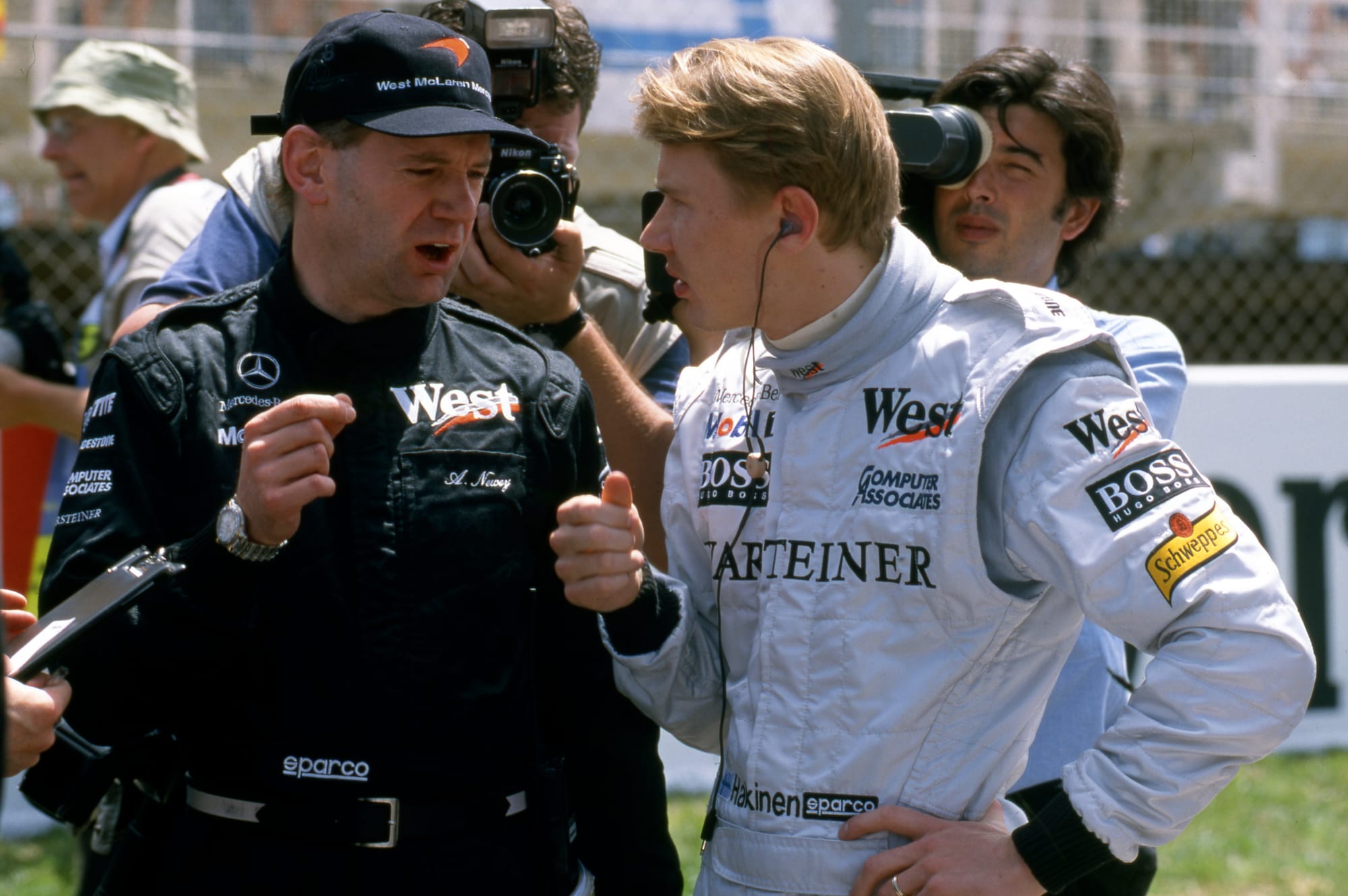
Newey arrived at McLaren pre-season in 1998. There was a major regulation change for that year, wiping any accumulated advantage (such as that enjoyed by Newey-era Williams) away. Narrower cars on grooved tyres meant a ground zero reset.
Much of what became the totally dominant MP4/13 had already been decided as Newey arrived. The low-nose concept to lower the centre of gravity and reduce the strain on the weaker tyres was already in place.
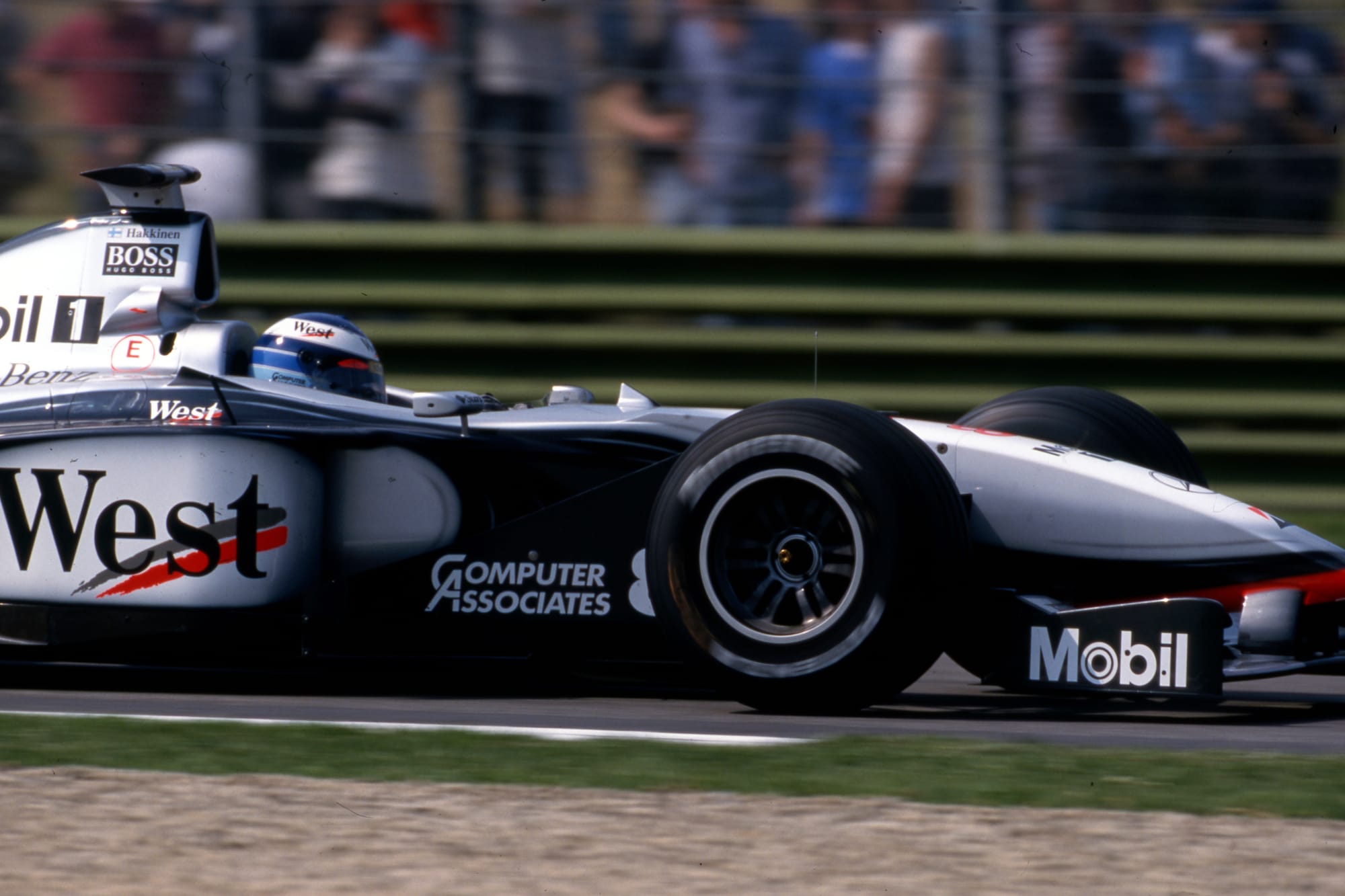
What Newey added was a longer wheelbase to reduce the centre of gravity height even further and a brilliant solution to the chassis dimensional requirement. Ears on the top of the chassis allowed the height regulation to be met while lowering the centre and still retaining plenty of downforce-creating volume beneath.
F1 dominance transferred apparently seamlessly from Williams to McLaren at just the time he'd left the former to join the latter. Obviously, that wasn’t 100% down to Newey but for sure there was significant causation amid the correlation.
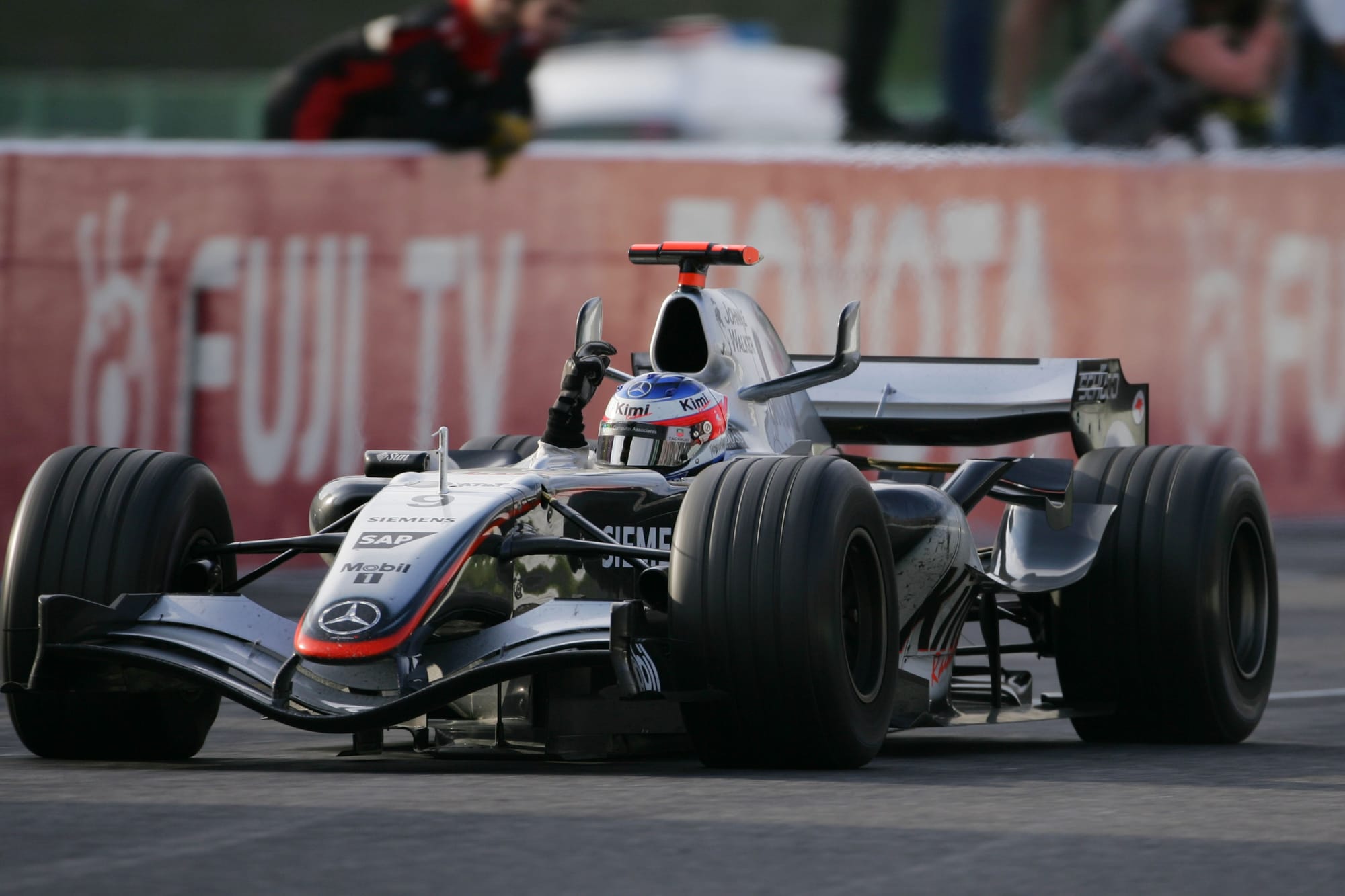
Newey's last McLaren was the 2005 MP4-20 in which Kimi Raikkonen lit up the tracks. It was by some margin F1's fastest car that year, but not its most reliable.
Its performance was at least some solace for Newey as he felt ever-further constrained by the management control imposed by Ron Dennis and Whitmarsh. McLaren had proven to be a far better-run, more modern environment than Williams but that level of control always chafed at his collar, especially when it impacted upon what he deemed to be necessary in developing their cars.
He'd been especially disappointed when his plans for the 2004 car - which would essentially have been the 2005 car one year early - had limitations put upon it by management, spooked by how his over-ambitious MP4-19 of 2003 could never be raced, such was its poor reliability.
So when Red Bull came calling, with its freewheeling style and its openness to letting him operate however he liked...
Red Bull
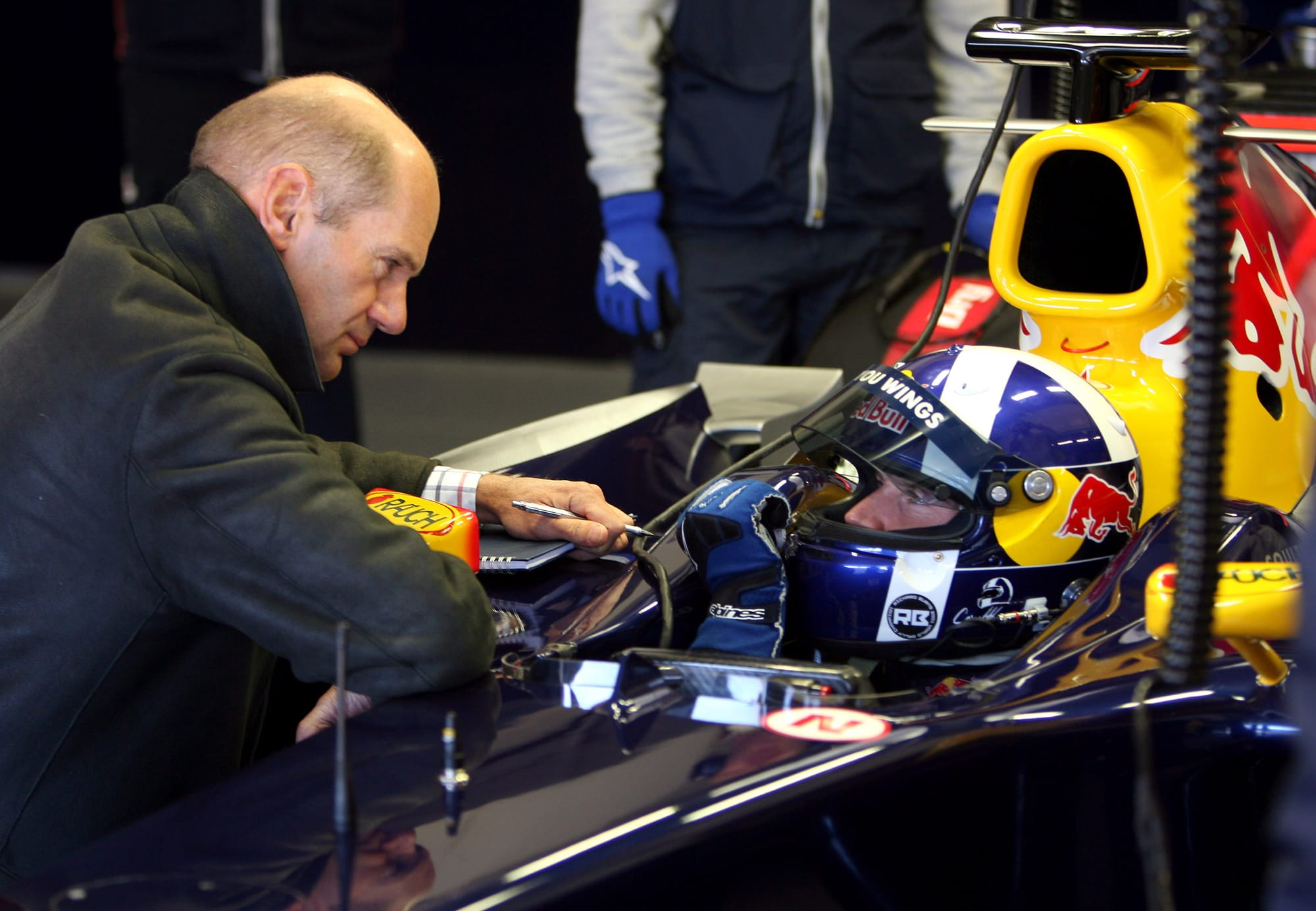
...it was a done deal. He joined in 2006. He immediately felt very at home there, but discovered a team in a much earlier stage of its technical evolution than McLaren. By his own admission, his first design for the team was too ambitious for the team's capabilities.
But there was a big regulation change on the horizon - always a big opportunity for Newey. With the team quickly evolving, he was able to realise his ambitions with the 2009 RB5.
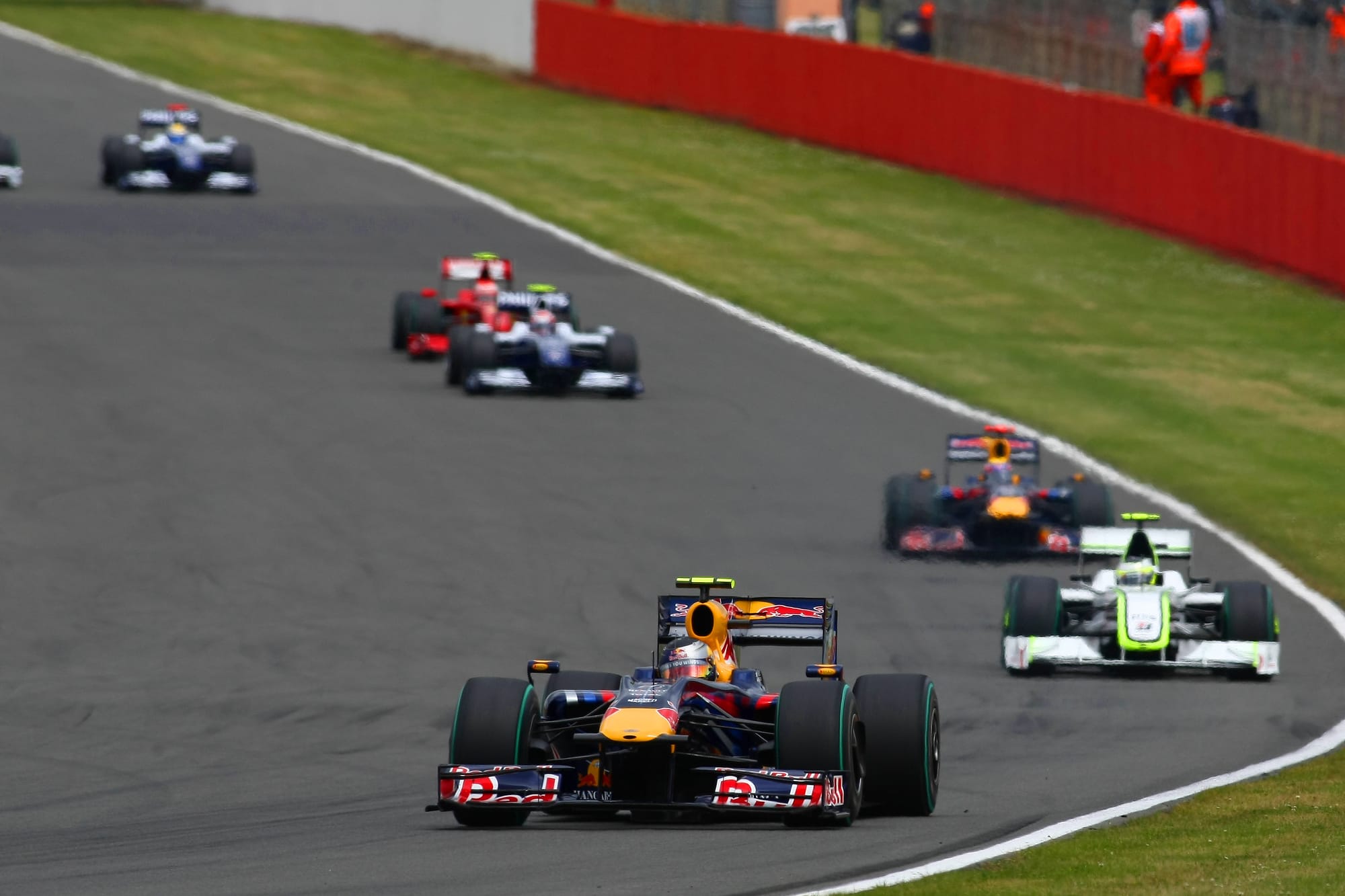
Although he missed the Brawn's double diffuser loophole, the core of the car's speed came from Newey’'s clever treatment of the chassis shape, creating a powerful boost to the all-important Y250 vortex.
Even with just a single diffuser it was almost as fast as the Brawn. When it received its enhanced double diffuser (at Silverstone) it became F1's pacesetter, just as so many of his cars in the past had, regardless of team.
The RB5 was the basis not only for the blockbusting multiple title winners of 2010, 2011, 2012 and 2013, but became the blueprint for pretty much every F1 car which followed in the remainder of the V8 era.
Renault had been a great engine partner in the normally-aspirated era, particularly with regard to Newey's blown exhaust aerodynamics and the software to exploit them, but Newey was deeply disappointed with its approach to the new hybrid formula.
After a few years of little apparent progress there had put Mercedes out of reach, Newey lost his mojo and announced his retirement from F1.
But he never properly left and Red Bull's alliance with Honda brought back all his enthusiasm. Newey's answer to the all-new ‘ground effect’ regulations of 2022 brought yet another period of dominance. Which lasted right until he walked out the door...
Aston Martin
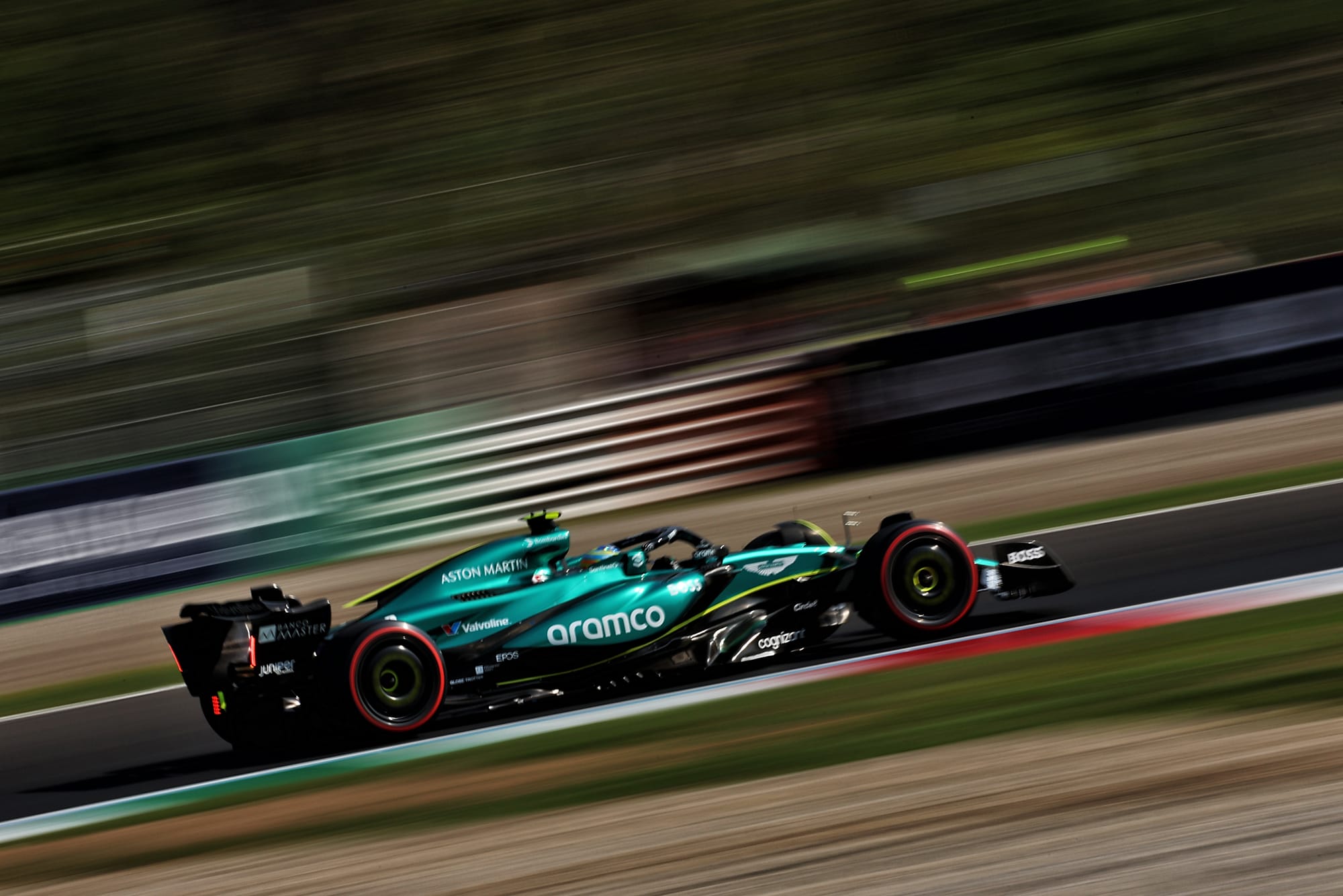
A hugely ambitious, big-spending Aston Martin appears to have succeeded in tempting Newey to delay retirement - such an announcement is expected next week.
How successful this alliance is will depend upon Newey being happy in the environment, especially with such an ambitious owner as Lawrence Stroll at the helm.
But the potential looks immense, with so many technical heavyweights, a great cutting-edge facility - and a renewed partnership with Honda. Newey gets there in time to have some influence of the 2026 car of the all-new regulations too...


